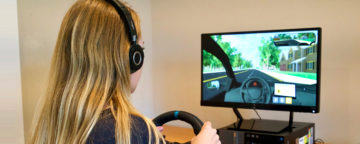The second edition of "If Your Adolescent Has an Eating Disorder," part of a series overseen by the Annenberg Public Policy Center," has been published by Oxford University Press.


The second edition of "If Your Adolescent Has an Eating Disorder," part of a series overseen by the Annenberg Public Policy Center," has been published by Oxford University Press.

Children’s Hospital of Philadelphia and APPC researchers have demonstrated the feasibility of incorporating a virtual driving assessment system into the driver’s licensing process in Ohio.

Misleading videos about tobacco use are widespread on YouTube, where views of popular pro-tobacco videos have soared in recent years, a study from the Annenberg Public Policy Center finds.

Contrary to a 2019 study, a data reanalysis found no evidence of an increase in adolescent suicide rates after the release of Netflix's "13 Reasons Why."

Two-thirds of the news stories analyzed last year debunked the holiday-suicide myth, the false claim that suicides increase over the holidays, according to new research from the Annenberg Public Policy Center.